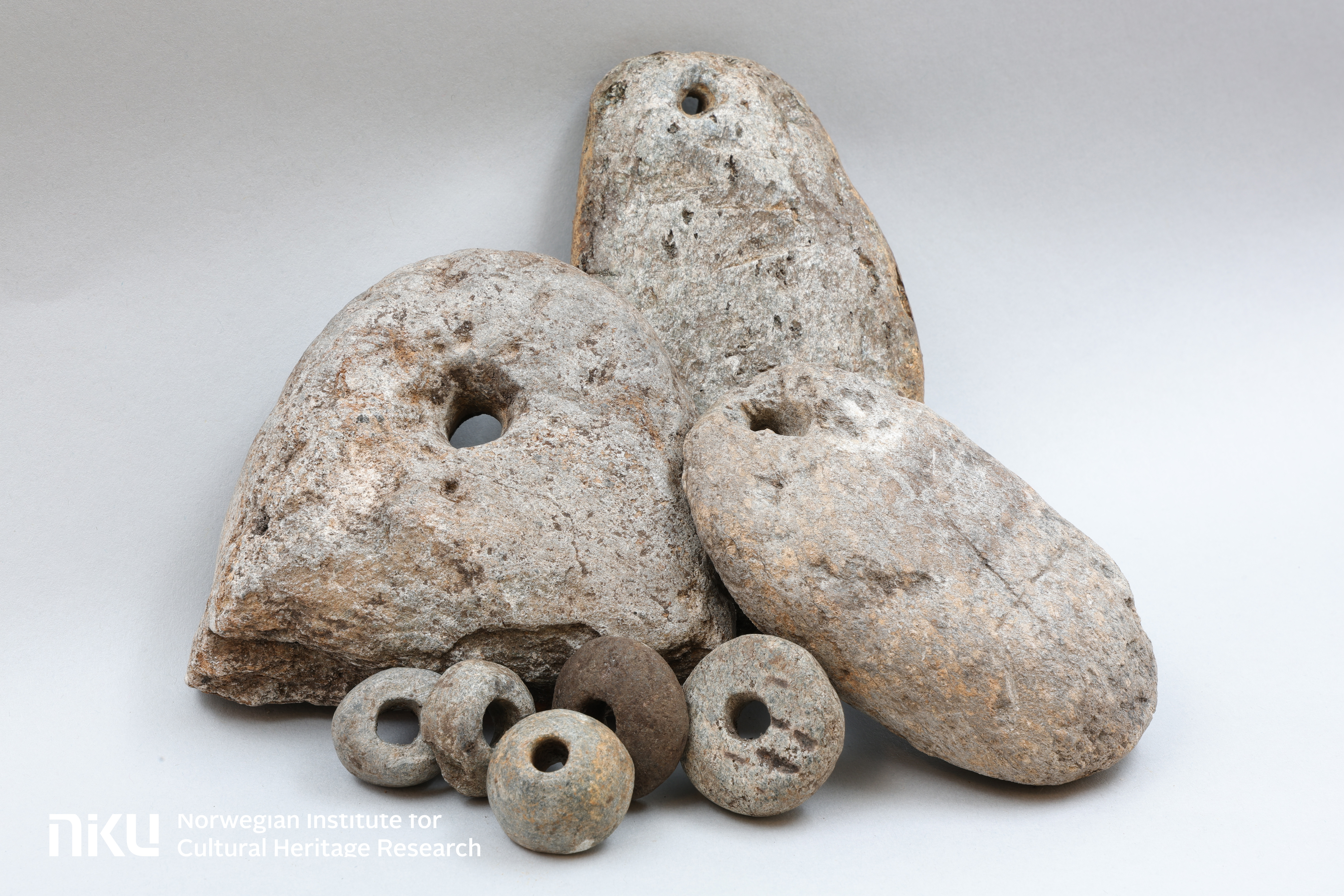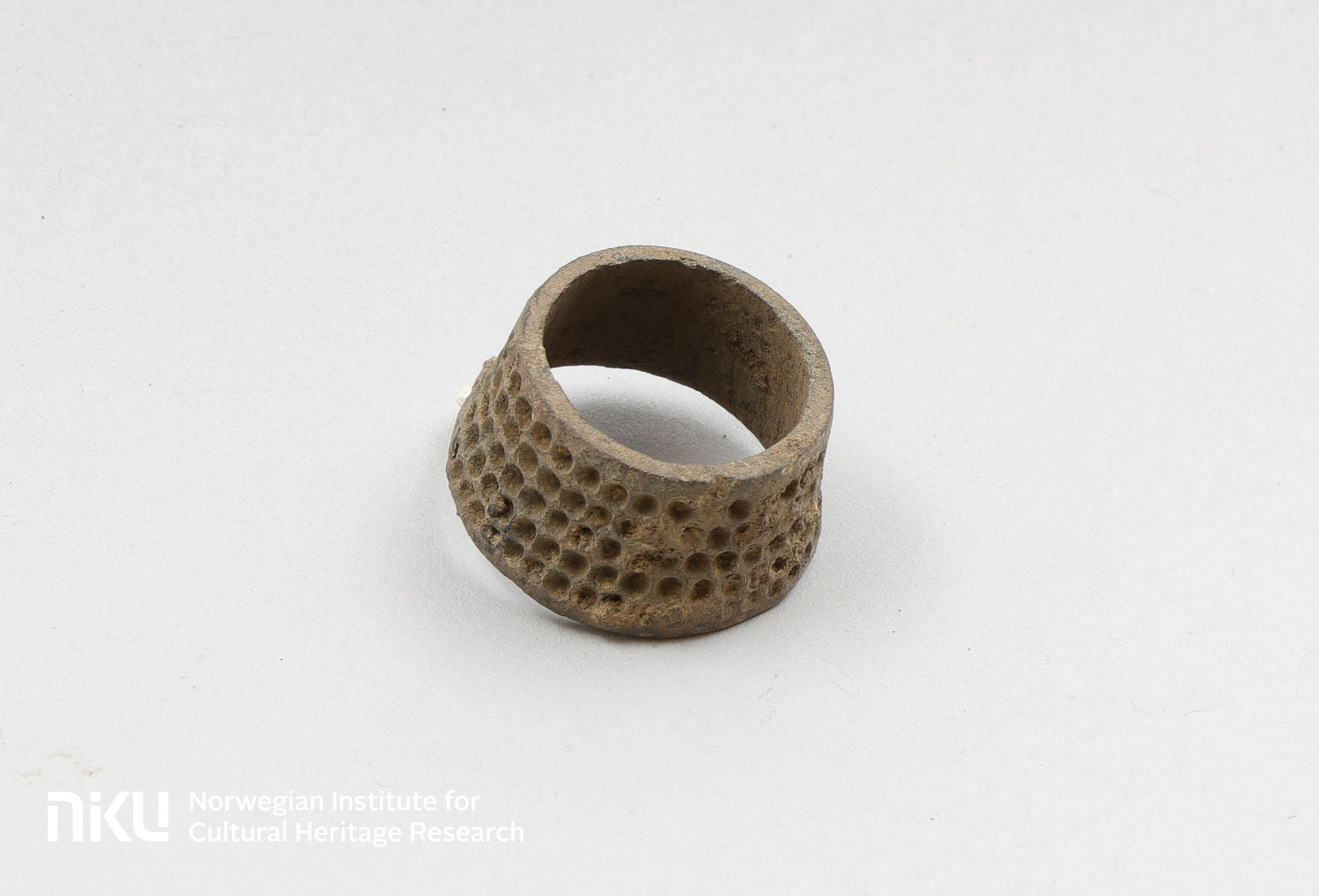Archaeologists have found a medieval spinning whorl in Tønsberg, Norway, which has some distinct symbols on its surface: three swastikas. But while we may associate this symbol with the Nazis, it actually has a much older history among various cultures and was used as a decoration in the Iron Age and Middle Ages.
Throughout the summer and autumn of 2024, archaeologists with the Norsk Institutt for Kulturminneforskning (NIKU), an independent research center for cultural heritage, excavated a site in Tønsberg ahead of work related to upgrading some street drains. During their dig, the team discovered the remains of what they believe was a “vevstue”, a building where textile works took place, NIKU told IFLScience.
The researchers are keen to stress that this was a space where craft activities took place, and this does not necessarily mean these activities were part of some large-scale or professional industry.
Inside the building, which has been dated to around the 13th century CE, the archaeologists recovered multiple objects related to weaving and textiles, including five loom weights belonging to a warp loom – an ancient loom that holds tension while the weaver weaves – six spinning wheels, a copper alloy thimble, and a decorated object made of antler that may have been part of a weaving sword, sometimes called a weaving batten.

These weft weights were used to tighten the warp threads for the warp loom.
Image courtesy of NIKU
But among these objects was the striking spinning whorl, a weighted object with a hole running through its middle. These objects were placed on top of a spindle which gave it momentum when it was spun. This made it possible to make threads from both animal and plant fibers and was essentially the starting point for all textiles.

The thimble is made of a copper alloy and suggests sewing took place in the building.
Image courtesy of NIKU
These tools were used to spin thread from the Iron Age and into the 17th century when the spinning wheel became more common.
The whorl from Tønsberg, made from red sandstone, has a flat base and top and is rounded on the sides. But on one side it has four distinct swastikas carved into it, three of which are facing right, while one faces to the left.
Contrary to what some may believe, the swastika is far far older than the symbol adopted and largely bastardized by the Nazis. It is actually an ancient symbol appearing independently in various cultures from across the world. In Indian Buddhist tradition, the swastika was associated with good fortune and directly tied to Buddha. It also appears in early Christian and Byzantine art, as well as among the art of the Maya in South and Central America, the Navajo Native Americans and other cultures.
For the Scandinavians, the symbol was used as far back as the Iron Age and archaeological finds have seen it appearing on everything from gold bracelets to bedposts.
“For example, swastikas have been found at the Kårstad carving in Stryn, on textiles from grave finds in Snartemo in Agder, and woven into textiles in the Oseberg find from Tønsberg. All of these are from the Iron Age,” Hanne Ekstrøm Jordahl , archaeologist and project manager at NIKU, said in a statement.
In other contexts, swastikas have been featured as graffiti on church walls in Kaupanger, Røldal, Ringebu and Reinli stave churches.
Although this is, at the moment, a relatively unique find – being a spinning whorl with decorations – the symbol appears frequently on textile objects from the Iron Age and the Middle Ages.
Although the exact original meaning of this symbol is unclear in the Scandinavian context, it has been associated with sun rays or rotating movements, which could explain its inclusion on the spinning whorl.
Source Link: Medieval Spinning Whorl Decorated With Swastikas Uncovered In Norway